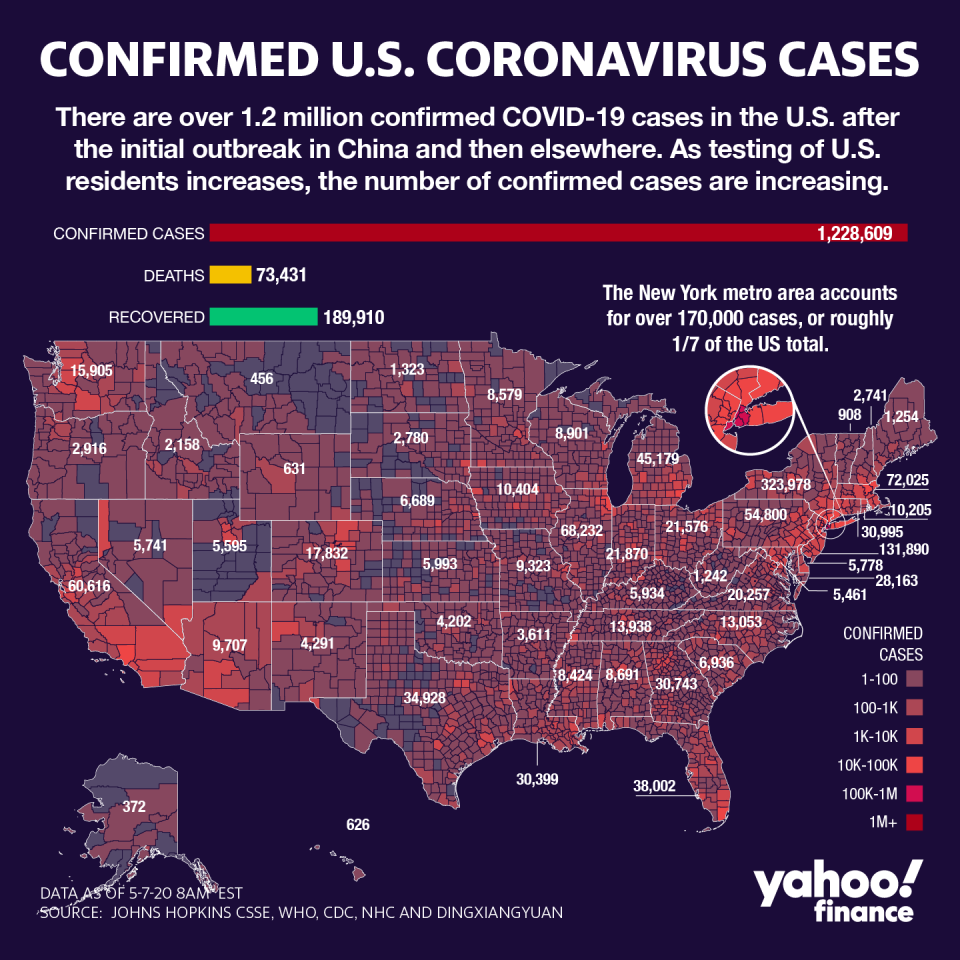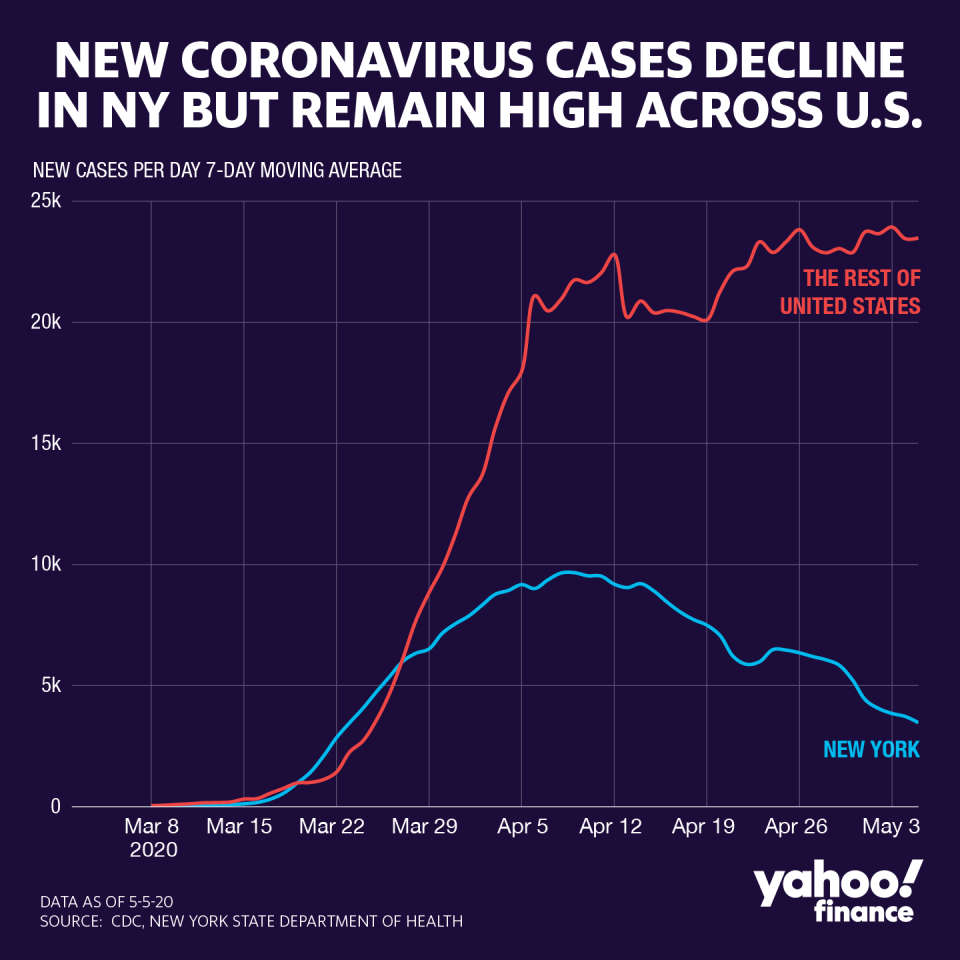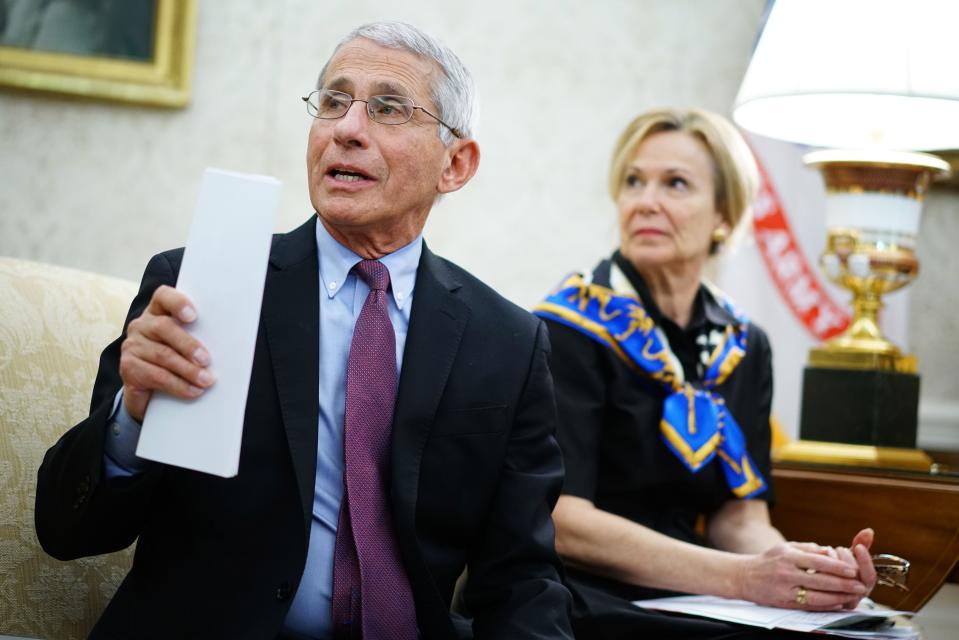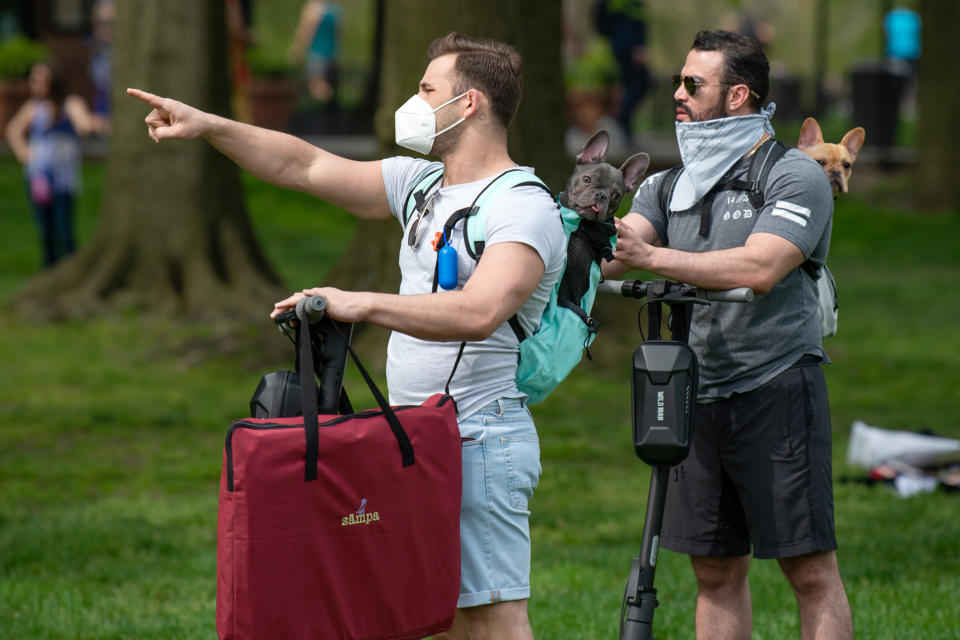Public health expert on coronavirus: 'We're well past containment at this point'
There are over 3.6 million cases of coronavirus around the world, and the U.S. accounts for roughly one third of them. Public health officials had hoped to keep the number of cases from growing in the country, but not all measures have been successful.
“We’re well past containment at this point,” Dr. Brian Garibaldi, medical director at Johns Hopkins’ Biocontainment Unit, said recently on Yahoo Finance’s The Ticker (video above). “We’re really at mitigation, and the only way we’re going to get this back under containment is the ability to identify hotspots of transmission and the ability to trace patients. But it’s really hard to do that if you still have over 1,000 cases per day in a certain area.”

Dr. Anthony Fauci, the director of the National Institute of Allergy and Infectious Diseases, said last month that if the U.S. had started mitigation earlier, it could have saved lives. The president had implemented stay-at-home measures in the middle of March, although the virus had shown signs of spreading a month earlier.
“I think we’re at a critical point,” Garibaldi said. “Some states are starting to slow down the rates of infection. Others are still seeing rises every day in both the numbers of new infections but also in death rates.”

‘If you think back to the HIV epidemic...’
The development of a vaccine and widespread contact tracing are two courses of action that public health officials are touting as the most efficient ways to try to stem the spread of the virus and allow states to reopen their economies.
Garibaldi urged people to be careful not to put “all of our eggs in the vaccine basket” as the pandemic continues.
“If you think back to the HIV epidemic in 1984, ’85, the thought was we would have a vaccine in a year or two years,” he said. “And obviously, we’re almost 40 years later, and we still don’t have a successful vaccine. This virus is different and seems like certain proteins in the virus induce a strong immune system response. So the hope is that means we’re going to be able to come up with a successful vaccine.”
In an interview with NBC, Fauci said the availability of a vaccine by January 2021 was “doable.” But the CEO of Roche, the world’s second-largest pharmaceutical company, is skeptical about the timeline, along with other health officials.

Garibaldi said Fauci’s prediction is “hopefully true, but that would still be the fastest vaccine development in the history of vaccines. There are numbers of companies working on it in multiple different ways of trying to devise a vaccine. I think it’s very likely we’ll have one, but I don’t think we’re going to have one until 2021.”
Without testing the vaccine in enough people, there comes a risk. If the vaccine is administered to billions of people, a small percentage could experience side effects.
“We have to be really careful not to push things through so quickly that we don’t have a clear idea of what the safety risks are going to be from any vaccine because we’ve seen this before,” Garibaldi said. “Most vaccines are quite successful and have low side effects, but there have been cases where vaccines have looked promising and then it had unexpected consequences.”

‘Nowhere near being able to test the number of people’
South Korea, a country that’s been lauded for its coronavirus response, has managed to contain the spread of the virus, and has even reopened parts of the country back to normal.
A key reason why is because from the beginning, it implemented contact tracing. According to the CDC, contract tracing means public health staff work with the person who has tested positive to help them recall everyone they’ve been in contact with during the period they’ve been infectious. The staff then warns those individuals as quickly as possible.
“There aren’t many places I can think of that have the ability to do that level of contact tracing, to be able to really identify who’s at risk, who needs to self-isolate,” Garibaldi said. “Because we do know that you can transmit this infection days before you become symptomatic. So just telling people to stay at home when they don’t feel well is not going to work.”
At this point, Garibaldi said the U.S. still doesn’t have enough tests to do the contact tracing that is necessary.
“We certainly have enough tests right now in our health care system to test all the patients that present with concerning symptoms or patients who need elective or urgent procedures,” he said. “We can test them to make sure that we understand what precautions need to be in place for their safety. But we’re still nowhere near being able to test the number of people in the community that we would need to really make informed health care policy decisions.”
Adriana is a reporter and editor for Yahoo Finance. Follow her on Twitter @adrianambells.
READ MORE:
Coronavirus: Health care workers face stress that's 'in many ways equal' to combat
Coronavirus response: 'Someone has to pay' for the rising U.S. health care costs
Read the latest financial and business news from Yahoo Finance
Follow Yahoo Finance on Twitter, Facebook, Instagram, Flipboard, SmartNews, LinkedIn, YouTube, and reddit.

